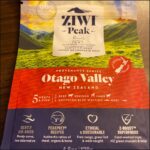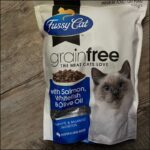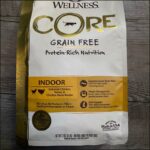Quick answer: Cats are carnivores and benefit from high protein animal-based dry cat foods.
Choose foods that meet the needs of cats for all ages.
Best Dry Cat Foods in Australia
I filtered the best dry cat food options in Australia. All are the best rated from my testing.
Ziwi Peak is the highest quality option with no added carbs, peas or soy.
It’s complete for cats of any age.
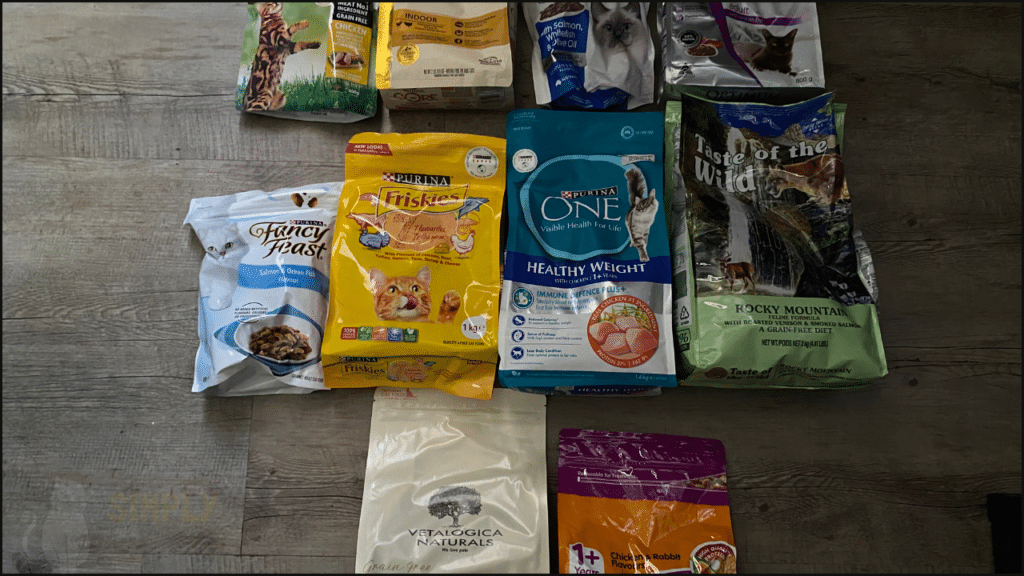
Then I tested them with cats and looked at the ingredients to find out what’s best.
As carnivores, higher protein and lower carb dry cat food is best.
In the rest of this article I’ll run through my top picks and a buying guide on choosing high protein cat food.
Then I’ll go through frequently asked questions on this topic.
As a dietitian, I have a background in researching nutrition for humans, but am also a cat nutrition enthusiast.
I’ve picked and hand-tested these treats to find what’s best. And I’ve analysed the nutrition.
Whilst I am not a veterinarian, I have taken every effort to ensure I’ve picked out the best cat treats.
Please note that this article is not intended as a replacement for medical advice.
>> Learn More on our About Page
How to Choose Dry Cat Food in Australia?
Quick answers:
- Choose high protein:
- Look for cat foods with high animal-based protein (above 26% for adults, 30% for kittens, and 40% for seniors).
- As a general rule of thumb, aim for 3/5 meat based in ingredients as a sign of quality.
- Watch for misleading labels:
- Look at the descriptor used on the label (e.g. chicken recipe, chicken flavor).
- Recipe, nuggets, dinner, entree = 25% or more of the ingredient (e.g. chicken recipe).
- With = 3% or more (e.g. cat food with chicken).
- Flavour = only trace amounts (e.g. chicken flavour).
- The best foods specify actual meat content with a percentage (e.g. 95% meat).
- Nutrition adequacy:
- Choose cat foods that meet AAFCO guidelines for either maintenance, growth, or all life stages, depending on your cat’s age.
- Adult or maintenance = adult cats aged 1-7 years.
- Growth = <1 years.
- All life stages = any cat.
- Supplement = only as a supplement (not a complete meal).
Long answers:
Here’s what to look for when choosing the best dry cat food for your needs.
Know What Your Cat Needs
Cats are obligate carnivores.
For owners that feed their cats dry food, they’ll want to make sure to choose food high in animal-based protein sources.
This includes things like chicken, beef, fish, and turkey.
Cats, unlike many other animals, use protein as a sole source of energy by converting it to glucose in the liver (humans do this, but not to the degree that cats do).
In fact, cats do this all the time which means they need a constant supply of protein to keep energy up (and why cats eat many small meals over the day).
Choosing a food packed with meat is the way to go.
Check The Label
You know the saying “Don’t judge a book by it’s cover”.
The front label is often misleading and doesn’t tell you much about what the food contains.
Many terms like ‘natural’ and ‘meaty’ aren’t meaningful.
What is?
To know what you want to look for, you need to know a little about pet food labelling laws.
These are laws which the pet food industry in Australia must adhere to (see more here).
Cat food labels use descriptors which mean certain things about ingredient content.
The pet food industry in Australia uses specific descriptors like “recipe,” “dinner,” “nugget,” and “entree” to indicate a minimum of 25% of the named ingredient.
On the other hand, “with” has only 3%, and “flavor” implies trace amounts.
Be cautious of foods labeled “with” or “flavor,” as they may contain lower quality ingredients, though exceptions exist.
Look for High Protein
Cats need a high protein diet as carnivores.
Protein gives cats the energy they need for the day and keeps muscles strong.
Meat is appropriate for your cats dietary needs.
For adult cats (1-7 years) you’ll want a cat food with greater than 26% protein dry matter basis.
Kittens and old cats need more.
Growing kittens need 30% protein and older cats (12+ years) benefit from intakes over 40%.
As a general rule of thumb for any cat aim for 40% protein.
This means your cat is getting enough regardless of age.
The nutrition analysis shows what you need, but you’ll need to use a calculator to work out the dry matter basis.
Other names for nutrition analysis:
- Guaranteed analysis
- Typical analysis
- Nutrition
The foods on this list at the start of this article all contain at least 40% protein.
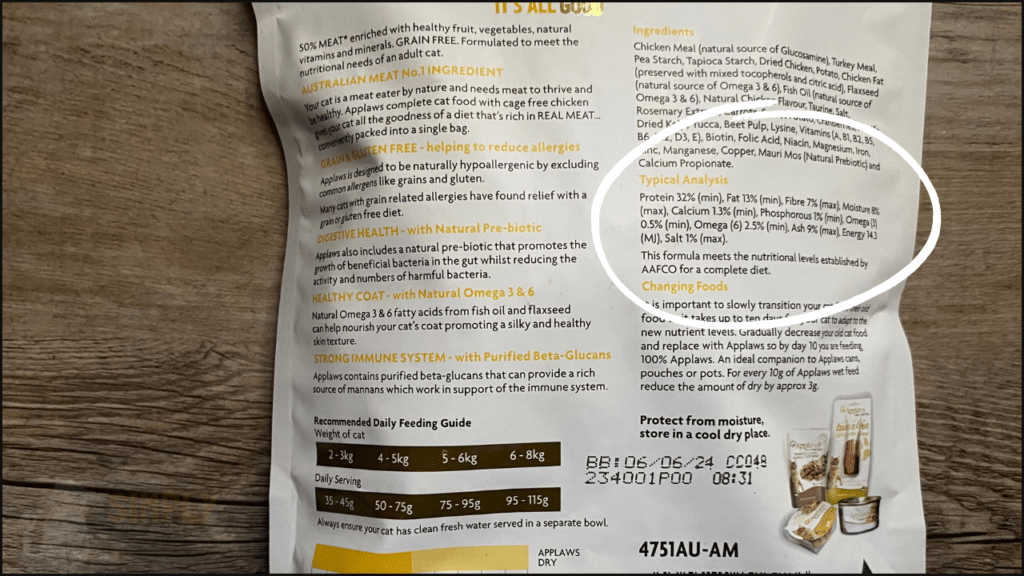
Check the Ingredients
Quality matters.
A wild cats diet includes prey like mice, insects, and birds.
Not only does meat taste great for cats, but it gives cats high quality protein.
Meat is high in essential amino acids (a sign of quality).
On the other hand, grain based protein is lower quality.
Grain protein is:
- Lower protein quality
- Harder to digest
- Less tasty
Looking for grain free isn’t probably necessary, but you won’t want too much grain protein because of it’s poor quality.
A trick some cat food manufacturers use it load up on weaker protein sources, and then boost taste with meat flavors instead.
You want to avoid that, since it’s not going to offer your cat what they need (only what they think they need).
Not all cat foods are designed with your cats health in mind.
By law, ingredients are listed by weight from top to bottom.
However, how they’re divvied up can vary.
As a general rule of thumb, check the first 5 ingredients.
Ideally, all 5 are meat, but that’s rarely the case.
Anything less than 3 is red flag, especially if meat isn’t the first ingredient.
Air dried and freeze dried cat foods are the highest quality options (e.g. Ziwi peak cat food).
If you’re after the best quality food, then those are your best options and you can look no further.
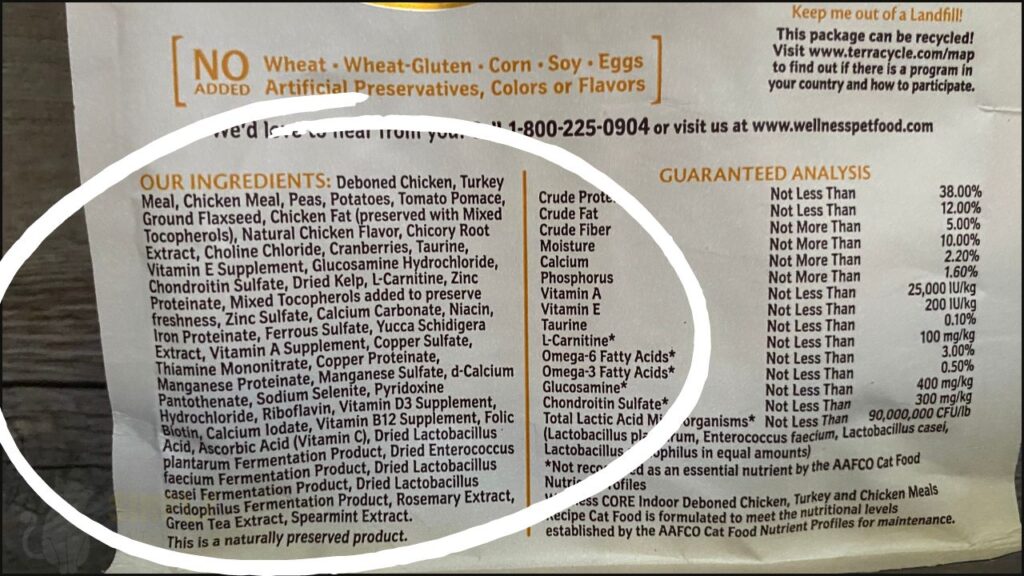
Look for a Statement of Nutrition Adequacy
You want complete cat food.
Complete cat food includes all the nutrients cats need, defined by AAFCO.
AAFCO are a non-profit organization that research and publish nutrient guidelines for cats and dogs.
The label will say if the cat food is for either:
- Maintenance
- Growth
- All life stages
- Supplemental feeding
Maintenance is suitable for adult cats (1-7 years). For kittens you’ll want either growth or all life stages.
There’s no recommendations for seniors, but I suggest choosing cat food suited to ‘all life stages’. This gives senior cats the added nutrients they need to support ageing.
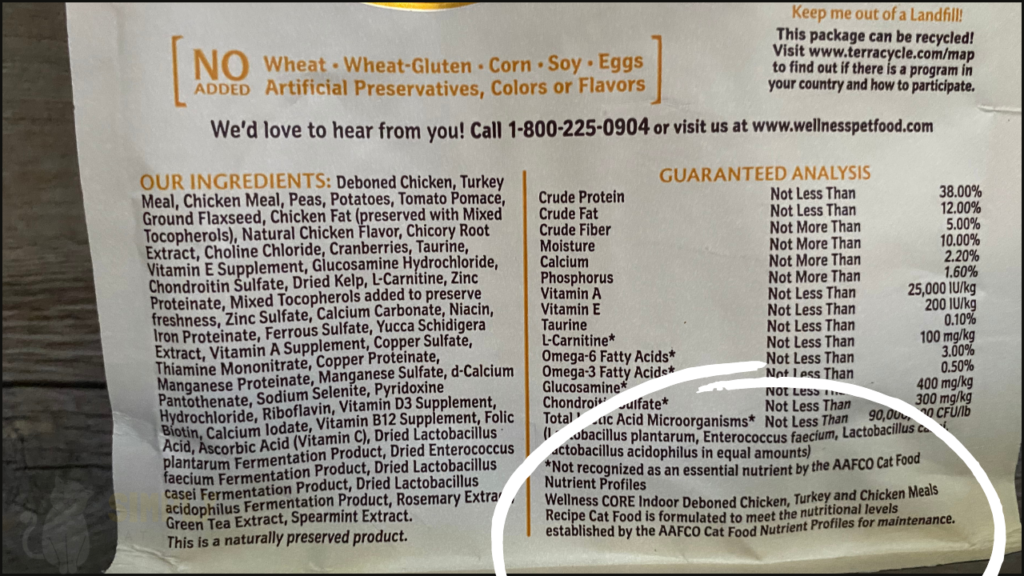
FAQ
Quick answers:
- Food to stop vomiting?
- Try grain-free and low fiber options like Ziwi Peak to reduce vomiting.
- Vet-recommended cat foods?
- Hill’s, Optimum, or Royal Canin are commonly recommended by vets.
- Should you soak dry foods?
- Soaking can help with hydration and urinary health.
- Healthiest dry cat food?
- Ziwi Peak offers a high-protein, grain-free option suitable for all ages.
- Feline Natural also offers a freeze dried cat food.
- Feeding guidelines?
- Follow packaging guidelines; amounts vary by age, size, and activity level.
- Adults typically need 1/4 to 1/2 cup per day.
- Food for older cats?
- Wet food is preferred for its protein content and moisture, beneficial for urinary and kidney health.
- Soak dry foods for older cat health.
Long answers:
Conclusion
Dry cat food offer convenience, but at the cost of quality.
Most dry cat foods load up on cheap grains, which cats don’t need. This can hamper digestion and lead to food rejection.
As a general rule, aim for 40% protein (dry basis). Look for the statement of nutritional adequacy and choose lifestage appropriate cat food.
>> Our best rated dry cat food is Ziwi Peak. It’s the highest quality cat food packed with grass-fed meat and organs for the pickiest of cat.
Resources:

